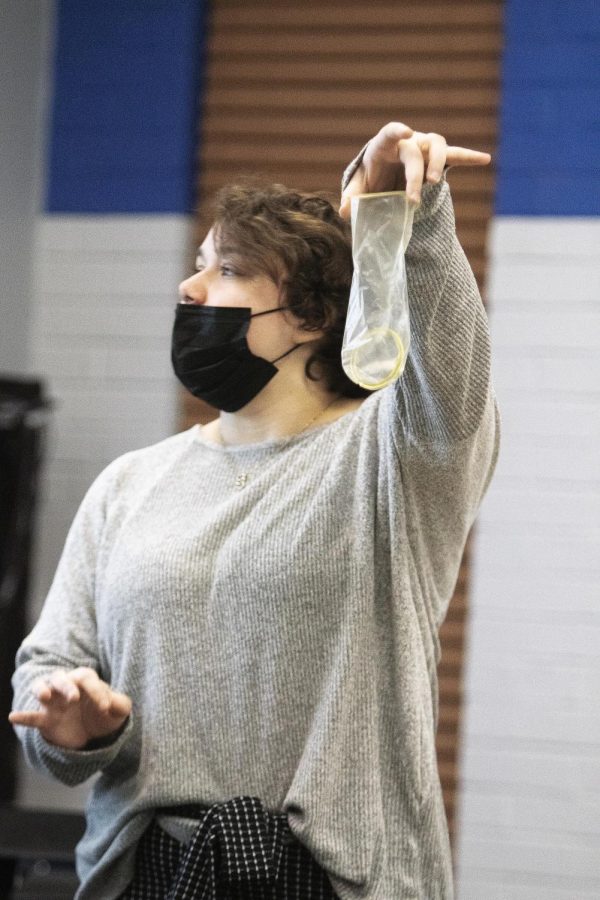Valentine’s Rubber Lovers gives safe sex and protection to students
Emily Bernard, a graduate student studying health promotion and leadership, presents what a female condom is and how it works for Eastern Illinois University’s Health Education Resources Center’s Rubber Lovers Valentine’s Edition. Bernard talks about many different sexual health topics in her presentation such as safe sex, different types of condoms, and sexually transmitted diseases in the Arcola/Tuscola room of Martin Luther King Jr. University Union.
February 9, 2022
Eastern’s Health Education Resource Center held its Valentine’s Day edition of Rubber Lovers, a presentation that details safe sex practices and proper protection usage.
Each part of Rubber Lovers also explained the importance of consent and its meaning, which “is defined as a freely given, clear, unambiguous agreement between the participants to engage in sexual activity.”
The first form of protection the presentation addressed were dental dams, a barrier that prevents STI transfer during oral sex and oral to anal stimulation.
It’s important to check for rips and tears and expiration dates with all forms of rubber protection.
The female, or receptive, condom is another method of protection, and one that can be inserted up to eight hours before use, according to the presentation. This type of condom isn’t dependent upon an erection and is also not made of latex.
The final form of protection examined in Rubber Lovers was the male, or insertive, condom, which should be replaced with a new condom for each sexual act. These condoms are usually made from latex and are not to be used with oil-based lubricants.
According to the presentation, some of the reasons people don’t use condoms are the cost and a reduction in sensitivity, among others.
Rubber Lovers included an opportunity to practice putting male condoms on a wooden model of a penis, which involves an 18-step process, defined by the program as follows:
- Consent.
- Sexual arousal.
- Check the expiration date.
- Make sure the package is airtight.
- Open the package carefully.
- Make sure the condom is right side out.
- Check for rips or tears.
- Pinch the tip (-1/2 in.) to create a reservoir.
- Roll condom down erect penis.
- Squeeze air from condom.
- Insert into orifice.
- Ejaculate.
- Hold onto the rim at the base of the condom.
- Withdraw slowly.
- Remove condom.
- Check for rips or tears.
- Knot or wrap condom in tissue.
- Throw condom in the trash.
The presenter, Emily Bernard, a graduate student studying health promotion and leadership, said programs that promote safe sex like Rubber Lovers are more important than those that encourage abstinence, which Bernard said “fail most of the time.”
“I think it’s more important because, obviously, people are going to have sex eventually, knowing ways that they can protect themselves…like if they’re doing casual sex, definitely using protection is the best way to go, because you don’t know who that person has been with,” Bernard said. “You don’t know what they’ve come into contact with, so using these safety methods I think is a better way to protect our students. Giving them the knowledge and resources to make their own decisions, I think, instead of pushing it or forcing it on them.”
Ryan Meyer can be reached at 581-2812 or at [email protected].




















































